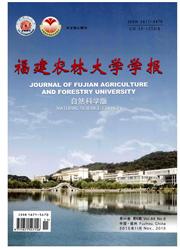

 中文摘要:
中文摘要:
根据中华蜜蜂(Apis cerana cerana)基因组序列,鉴定抗氧化酶系统的主要组分,并用RNA-Seq数据分析了工蜂行为发育中抗氧化基因在脑组织中的转录水平.研究表明,共有47个抗氧化基因,包括34个抗氧化酶基因和13个硫氧还蛋白基因.比较东方蜜蜂(Apis cerana)、西方蜜蜂(Apis mellifera)和黑腹果蝇(Drosophila melanogaster)的抗氧化基因,抗氧化酶系统的主要组分在进化上保守,但抗氧化酶基因家族的成员存在物种间差异.如东方蜜蜂和黑腹果蝇的SOD基因家族含3个成员,而西方蜜蜂有2个;果蝇有43个GST基因,而东方蜜蜂和西方蜜蜂仅有14和13个.RNA-seq分析显示,抗氧化基因的表达水平随着工蜂行为发育而发生规律性变化.工蜂脑表达的46个抗氧化基因,约有60%在由内勤蜂(哺育蜂和守卫蜂)转变为外勤蜂(采集蜂和侦察蜂)时明显表达上调,说明外勤蜂脑组织清除活性氧的酶促反应速率更高.
 英文摘要:
英文摘要:
The major components of antioxidant system were identified from the newly sequenced genome of the Chinese honeybee (Apis cerana cerana). Totally 47 antioxidant genes were identified, including 34 genes encoding antioxidant enzymes and 13 genes encoding thioredoxin (TRX). Comparison of the antioxidant genes from Apis cerana, Apis mellifera and Drosophila melanogaster showed that although the basic components of the antioxidant system were conserved, there were species differences in paralogs. For instance, both A. ceraaa and D. melanogaster had three superoxide dismutnse (SOD) genes, while A. meUifera had two; D. me/ano- gaster had 43 glutathione S-transferase (GST) genes, while A. cerana and A. mellifera had 14 and 13 GST genes, respectively. The brain expression patterns of these antioxidant genes during behavioral development of worker bees were determined by using five RNA-Seq libraries (newly emerged workers, nurses, guards, foragers, scouts). It was found that 46 predicted antioxidant genes were expressed in the brain of worker. RNA-Seq data showed that most of the antioxidant genes were up-regulated in the brain of bees performing foraging workers relative to in-hive workers ( nurses and guards), indicating that the enzymatic reactions for ROS scavenging were carrying out at a higher rate in the brain of foraging workers.
 同期刊论文项目
同期刊论文项目
 同项目期刊论文
同项目期刊论文
 期刊信息
期刊信息
